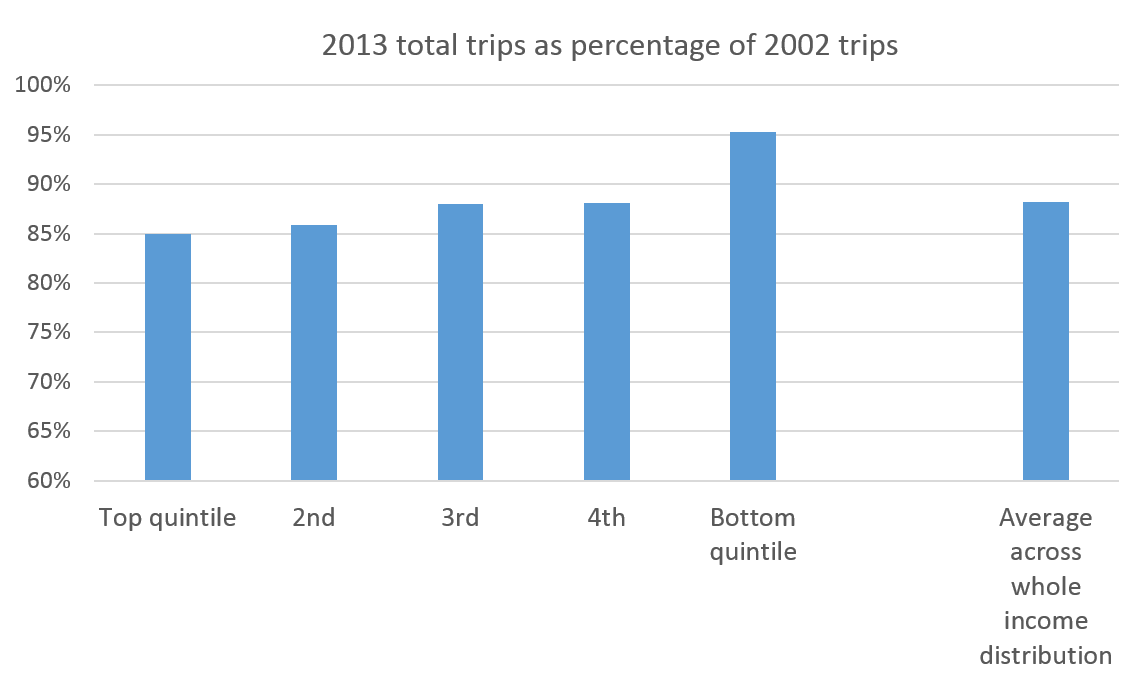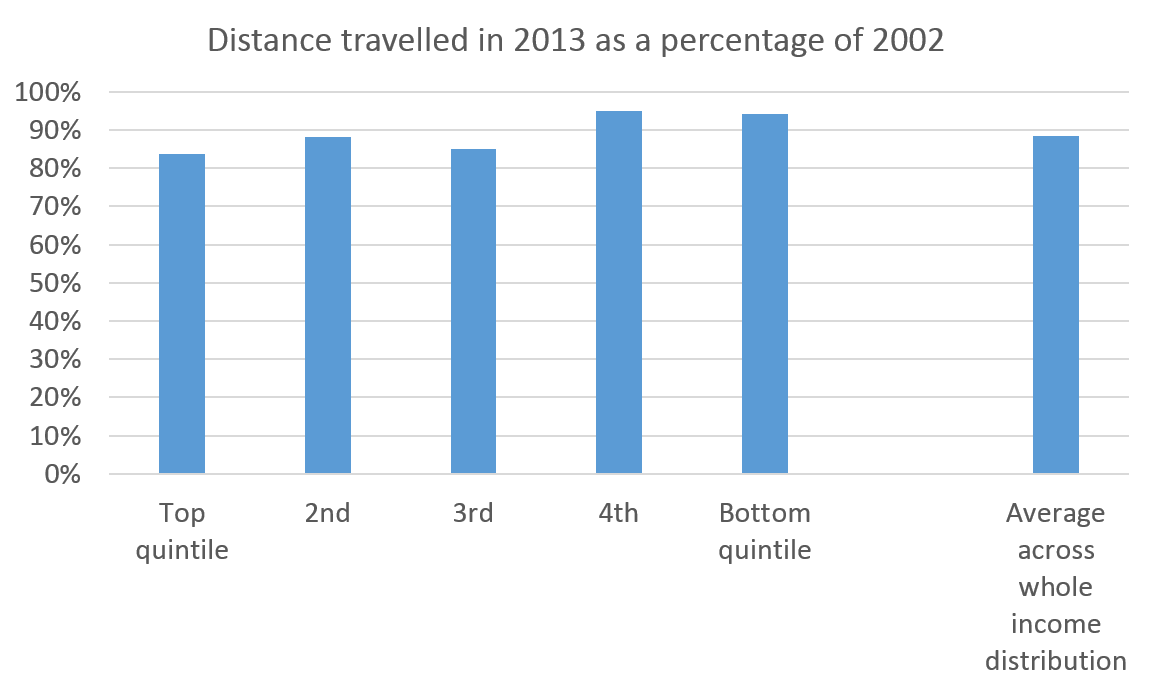Pressure on incomes is not the reason for declining UK travel
The amount of travel carried out by people in the UK continues to fall. Whether measured by the number of trips or the distance travelled, people are moving around less. The latest National Travel Survey (NTS) says UK adults made fewer trips in 2013 than they did in 1973. After rising until the early years of the last decade, the average distance travelled has also fallen. The possible explanations are fairly obvious. The internet has reduced the need for High Street shopping. Working from home is now more common than a generation ago. We tend to meet friends in local restaurants or pubs rather than visiting far-flung relations.
One other potential reason is that people’s real incomes have been dropping in the last few years. And as driving tends to get more expensive, we might expect individuals to drive less if they can. These two arguments sound plausible explanations. But examination of some of the detailed numbers in the NTS shows that they are probably wrong. Surprisingly, the richest 20% have cut their travel miles more than the least well-off 20%. And this reduction is driven mostly by decreased car travel. It’s those who can most afford to drive who have reduced their mileage the most. They still drive far more than poorer people but the difference has dipped sharply. This is additional support for the view that energy use will not rise sharply if incomes rise.
One other striking finding: more young women aged 17-20 now have driving licences than young men in the same age range. This is the first time any age cohort of women has ever had a higher percentage of drivers than men.
The data
The NTS chart below shows the recent fall in travel clearly. The number of trips taken in 2013 was 12% lower than in 2002 (and is now 3% below the 1973 figure). Time taken travelling has also been quite stable. Distance travelled rose in the nineties - principally as more people acquired cars - but has decreased 8% since 2002.
We see the phenomenon of ‘peak travel’ in most developed countries around the world. Many commentators find it counter-intuitive but I think it is easy to explain. Most travel is tedious and time-wasting. We might actively to choose to travel to a safari in a glamorous country but our day-to-day lives are dominated by commuting or driving to do the shopping. Given a free choice, we’d rather not take most trips that we currently are obliged to do.
If this idea is right, we’d expect the most well-off to reduce their travel the fastest. They are more likely to have the economic freedom to do cut the number of unattractive car and public transport journeys they take. And the evidence is that they are indeed reducing their trips and the distance they travel. The chart below shows that the top 20% (quintile) of the household income distribution have reduced the number of trips by 15% since 2002. The bottom quintile has only cut the number by 5%. As a result the least well off now take 80% as many trips as the richest quintile, compared to 71% in 2002.
Most of the reduction in trips across all five income groups comes from reduced car use. (Trips in cars are about 65% of all travel miles). The richest 20% take only 80% of the trips by car that they did in 2002. Less well-off groups saw a much smaller cut.
The same pattern can be seen when looking at distances travelled in cars. The top quintile cut the miles they drove as driver or passenger by 16% between 2002 and 2013, compared to 6% for the bottom 20% of the income distribution. The most well-off group travelled a typical 7,800 miles by car in 2013, down from 9,300 in 2002. Richer people still drive a lot more miles than poorer households, largely because they are much more likely to have access to a car, but the differences are declining sharply.
The decline in real incomes in the UK over the last decade does not appear to be a good explanation for the fall in UK travel. The reason lies in technology, psychology or sociology, not simple economics.


